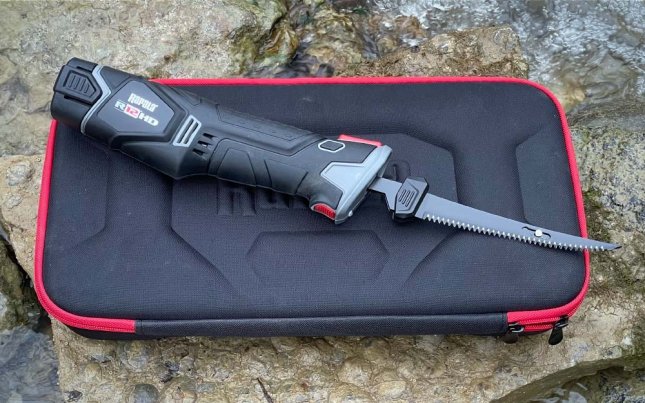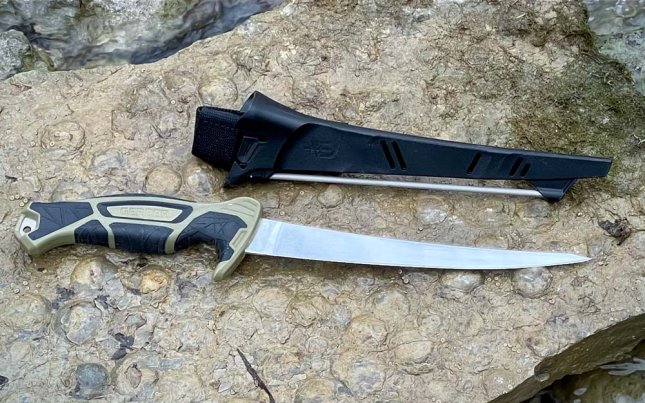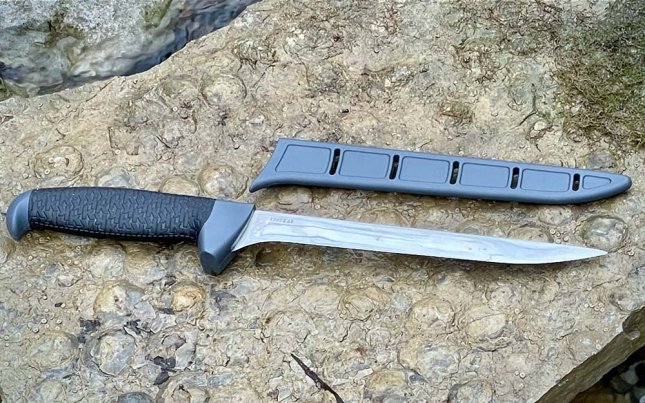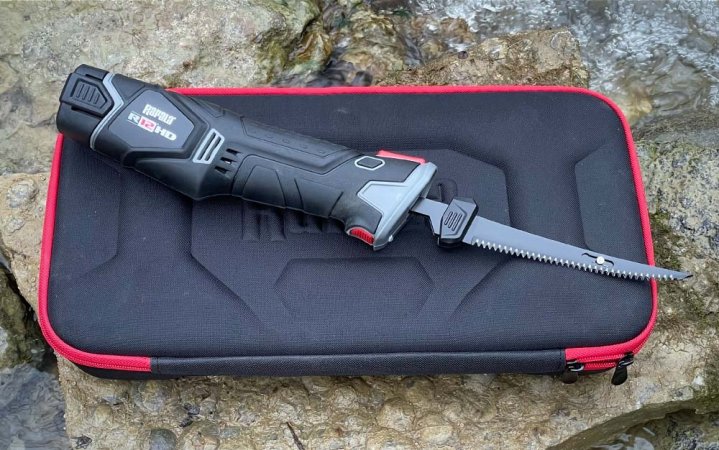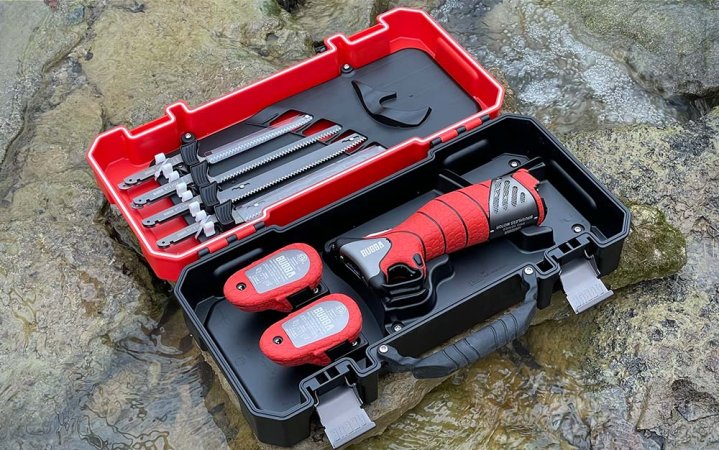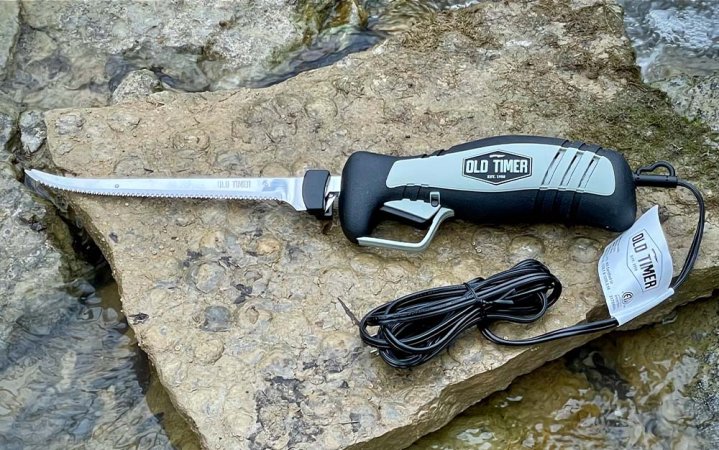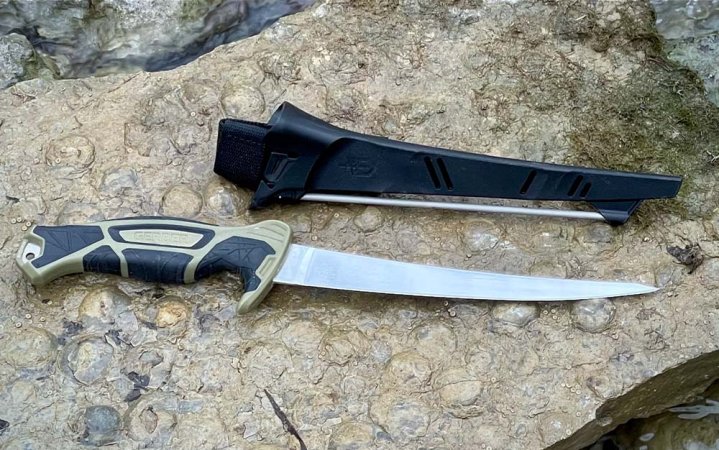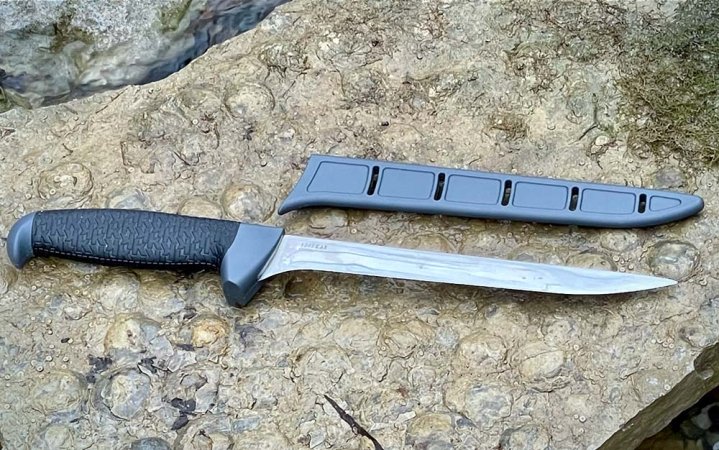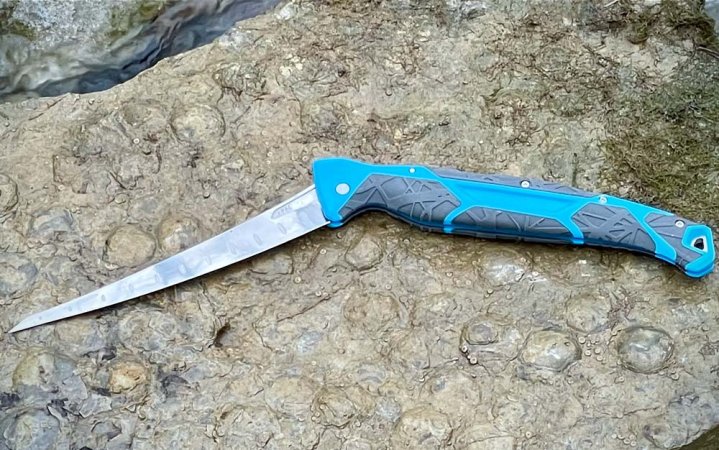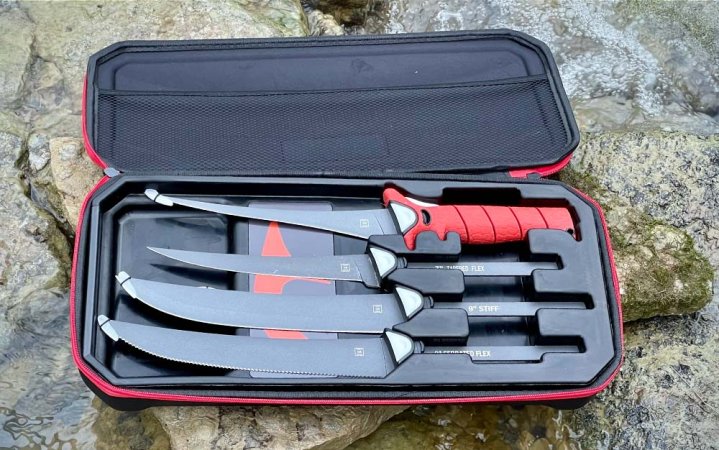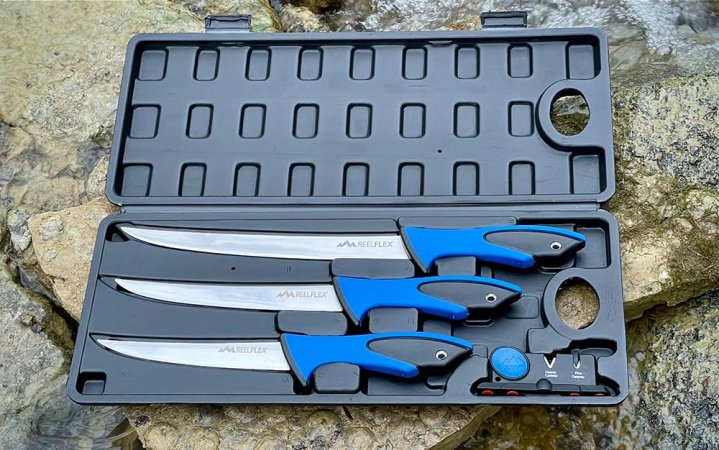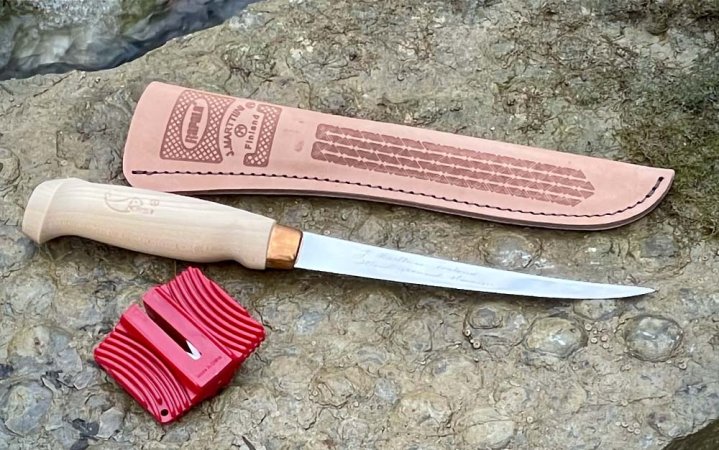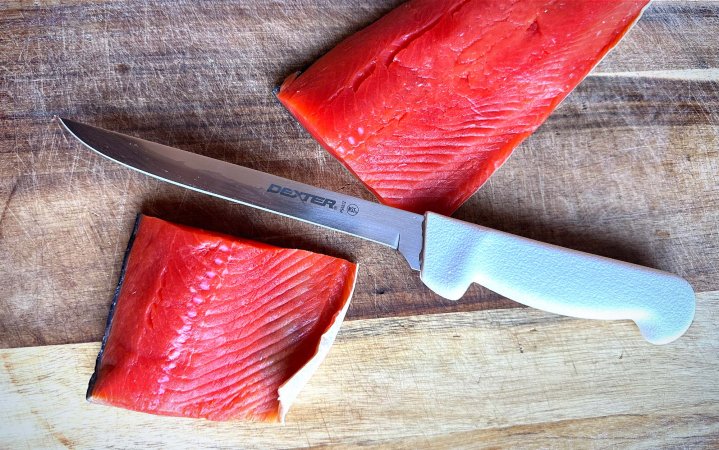We may earn revenue from the products available on this page and participate in affiliate programs. Learn More ›
Call me old school, but when I go fishing, my main goal is to bring home dinner. If you have the same goal, you’ll need a fillet knife to take fish from the water to the table. You can buy simple fillet knives with wood or plastic handles, to modern, electric fillet knives that make quick work of a limit. In the overwhelming sea of good fillet knives, it can be hard to pull out the keepers from the culls. I made that task a little easier by testing the best fillet knives on fresh and saltwater fish to see which best fit your fish cleaning needs.
- Best Cordless: Rapala R12 Heavy Duty Lithium Ion
- Best Cordless Kit: Bubba Pro Series Lithium Ion
- Best Electric Corded: Old Timer 110 Volt Electric with 8-foot Cord
- Best Fixed Blade for Saltwater: Gerber Controller 8-inch
- Best Fixed Blade for Freshwater: Kershaw 7.5-inch Narrow Fillet
- Best Folding: Gerber Controller 6-inch Folding Fillet
- Best Multi-Blade: Bubba Multi Flex Interchangeable
- Best Lightweight: Opinel No.15 Folder
- Best Traditional Fixed Blade Kit: Outdoor Edge Reelflex-Pack
- Best Budget: Rapala 6-inch Fish ‘n Fillet
- All You Really Need: Dexter Russel 7-inch Fillet Knife
How We Chose The Best Fillet Knives
For this test, I turned both saltwater and freshwater fish piles into ready-for-the-table fillets. I tested blade flexibility, how each handle felt during long cleaning sessions, and the gripping ability of each knife when they were covered in fish slime. I even enlisted the help of a few experienced fish cleaning buddies—including a couple who do it for a living—to get multiple opinions on the best fillet knives and their overall performance.
Best Fillet Knives: Reviews & Recommendations
Best Cordless: Rapala R12 Heavy-Duty Lithium Fillet Knife
Pros
- Fast blade speed
- Powerful, the most torque of all knives tested
- Spare battery
- Excellent blade shape and flexibility
Cons
- Only one blade style
Key Features
- Blade Length: 6 and 7 ½ inch
- Rechargeable batteries
- Internal LED light
Rapala’s R12 HD is the newest and most powerful in the Rapala line of cordless knives, and the instant response on the trigger makes for quick work on crappie. A small LED light automatically comes on when the trigger is pressed and makes it easy to clean in low light conditions. And a backup set of blades means you will always have a sharp set on hand.
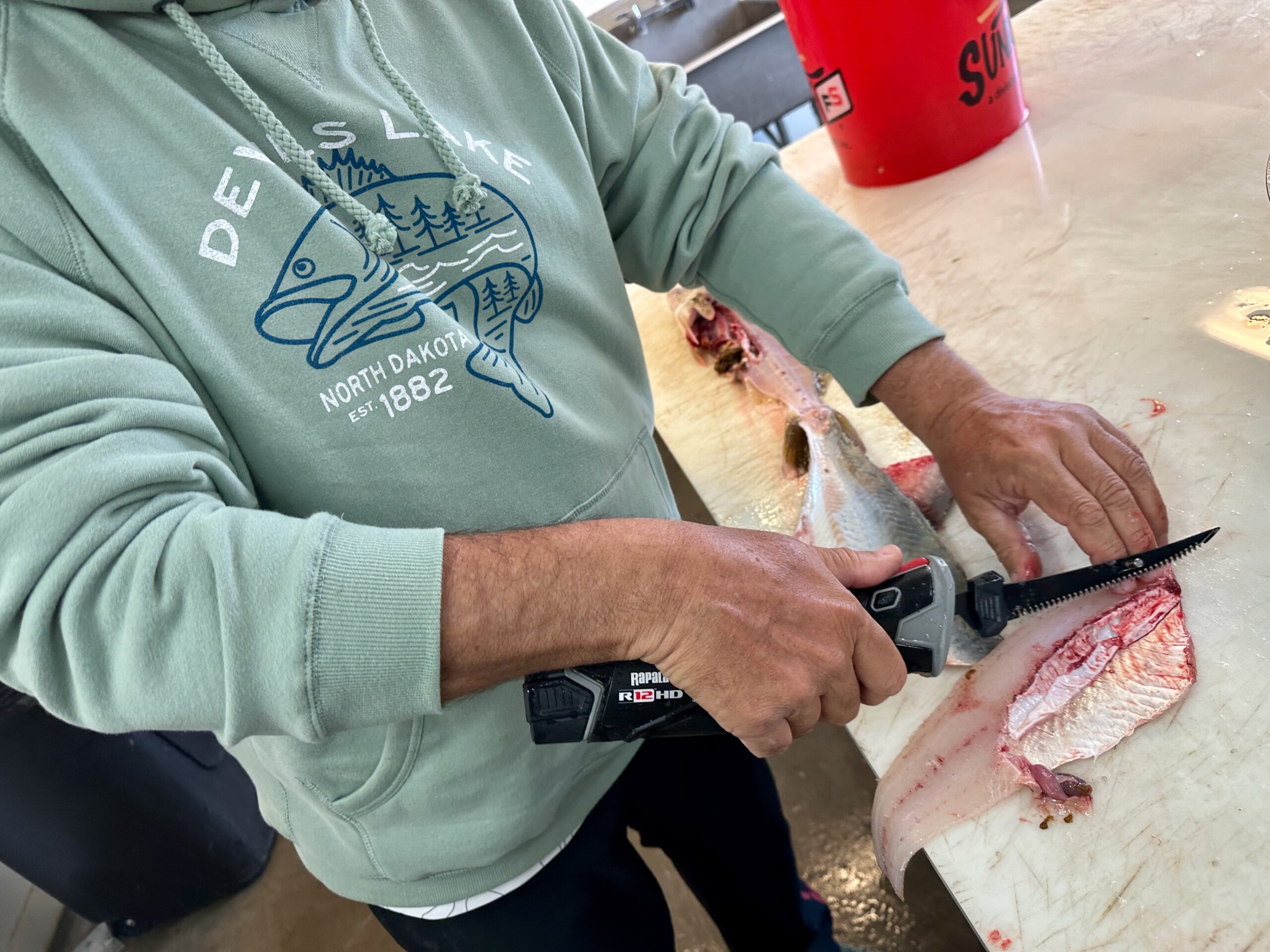
For this test, I enlisted the help of Justin Creech, a Crappie USA Tournament Trail competitor and frequent tournament champ. Creech spends a ton of time on the water and regularly brings home a haul of crappie for the freezer. After trying several knives, Creech went with the Rapala R12HD as his choice. “I was impressed,” he said. “More torque, faster blade speed, instant response time on the trigger. This is a great knife. I’ve used an older model from Rapala in the past, and this is head and shoulders above that one.”
Read our Rapala R12 vs Bubba Lithium Fillet Knife review to see how the two top electric fillet knives faired head-to-head.
Best Cordless Kit: Bubba Pro Series Cordless Electric Fillet Knife
Pros
- High torque motor
- Four blade styles to handle any size fish
- Spare battery
- Rapid battery charging
Cons
- Slight delay on trigger
Key Features
- Powerful, brushless motor
- Four blade options
- Two rechargeable batteries and station
If you find yourself cleaning a wide range of fish, this knife is a great option for you. With four blade choices from thin and flexible to wide and stiff, this knife will handle everything from panfish to the largest saltwater quarry. Dual batteries and fast charging times mean you always have plenty of power on hand. The Bubba Pro comes in a hard carry and storage case that safely stores the knife and keeps all batteries, chargers, and blades in one place.
Best Electric Corded: Old Timer 110V Electric Fillet Knife
Pros
- 8-foot cord
- Comfortable grip
- Responsive trigger
Cons
- Limited to cleaning areas with power outlets
Key Features
- Textured comfort grip
- Long cord
- 8-inch stainless blade
- Lifetime warranty
If you normally skin your fish where power is available, the Old Timer 110V Electric Fillet Knife is an excellent choice. It features a nicely curved, flexible 8-inch blade that fits most fish cleaning needs and comes with an 8-foot cord for extra reach at the cleaning station. The knife has a patented lockable trigger and comes with a self-draining carrying case to keep the knife dry between fishing trips.
Best Fixed Blade for Saltwater: Gerber Controller 8
Pros
- Blade can handle small or large fish
- Outstanding grip shape and texture
- Built in sharpener on sheath
- Flexible blade
Cons
- Grip shape is an acquired taste
Key Features
- 8-inch non-corrosive blade
- HydroTread Grip
- Built in sharpener on sheath
For this test, I enlisted the help of Captain Doug Chason, a guide based out of Apalachicola, Florida, and Wade Patterson, a professional fish cleaner at Lynn’s Quality Oyster seafood store in Apalachicola. Both were immediately impressed with the Controller 8’s grip shape and texture. “It took a minute to get used to the finger groove in the grip, but once I did, it felt really good,” Patterson said. Captain Chason was also a fan of the easy to hold grip and said that the blade left a smoother cut of meat on some big snapper he cleaned than other competitors. The ergonomic handle on the Controller allows you to keep a firm grip no matter how much fish slime and water build up on the knife. Gerber claims the HydroTread texture on the grip actually sheds water and keeps the handle dry during the cleaning session.
Best Fixed Blade for Freshwater: Kershaw Narrow Fillet
Pros
- Stainless, flexible blade
- Easily to sharpen
- Excellent grip
Cons
- A bit too much flex for really large fish
Key Features
- Stainless 7.5-inch blade
- Flexible but durable blade
- Overmolded K-Texture rubberized grip
This Kershaw 7.5-inch Narrow Fillet knife is my choice for a live well full of crappie or a stringer full of trout. The stainless steel blade is hard enough to hold an edge but resharpens easily, and it’s flexible enough to both remove meat from the bone, then slide easily between the fillet and skin. One of the best features on this knife is the over molded K-Texture rubberized grip. While it’s firm enough to hang onto, the soft grip makes it easy to grip the knife in even during the messiest fish cleaning conditions. The knife also comes with a slide on blade protector to keep the edge sharp and prevent unwanted cuts.
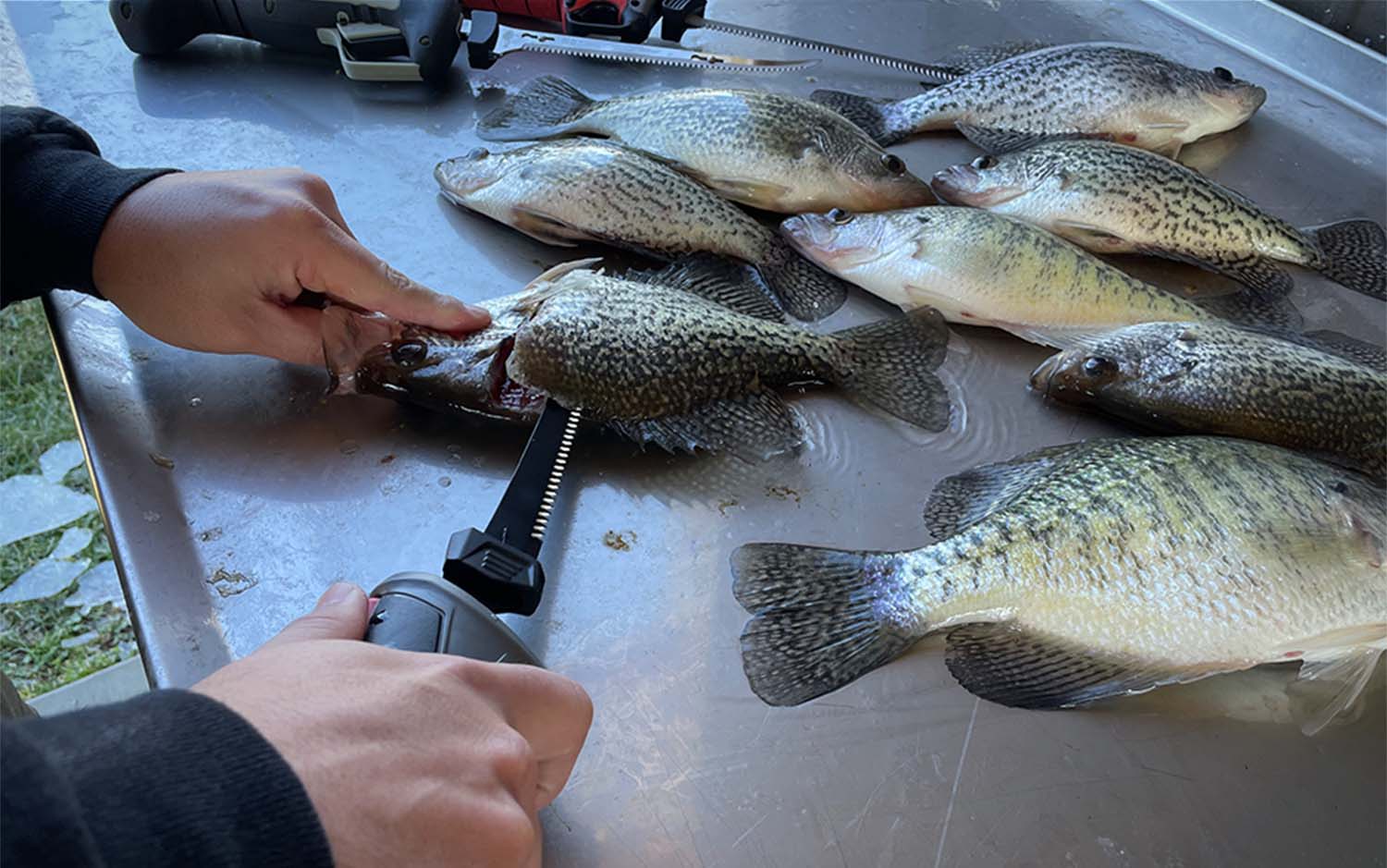
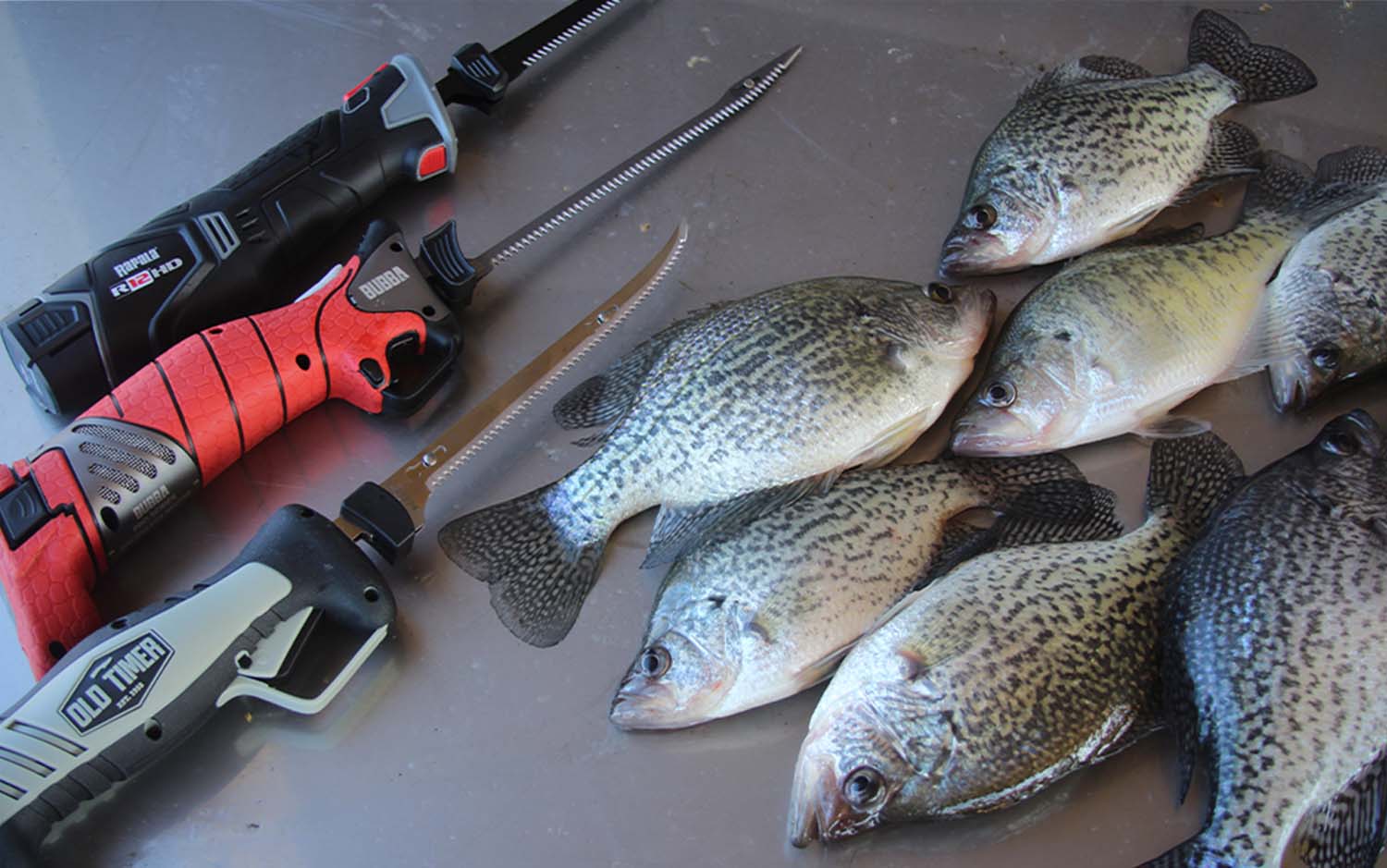
Best Folding: Gerber Controller 6-inch Folding Fillet
Pros
- Folding style takes up little space
- Easy to clean
- Slim design
Cons
- Handle can get packed with scales and fish slime during a cleaning session
Key Features
- 6-inch folding blade
- HydroTread Grip
- Slim design for easy packability
When space is at a premium, a good folding fillet knife is the way to go. The Gerber Controller 6-inch folder takes up less than 7 inches of space when folded into the handle. Fold it out and lock the 6-inch stainless blade into position, and you have a full size knife capable of most fish cleaning needs. With the same HydroTread grip material as Gerber’s other fillet knives, this one is easy to hold during cleaning, and the mirror polished blade features Gerber’s SaltRx technology to keep it looking great in either salt or freshwater conditions.
Read Next: How to Fillet a Trout
Best Multi-Blade: Bubba Multi Flex Interchangeable
Pros
- Multiple blade styles
- Outstanding non-slip grip
- Handy, puncture resistant carrying case
Cons
- Blade locks aren’t easy to use with slick hands
Key Features
- Non-slip grip
- Four blade styles and shapes
- Handy carrying case with removable lining for easy cleaning
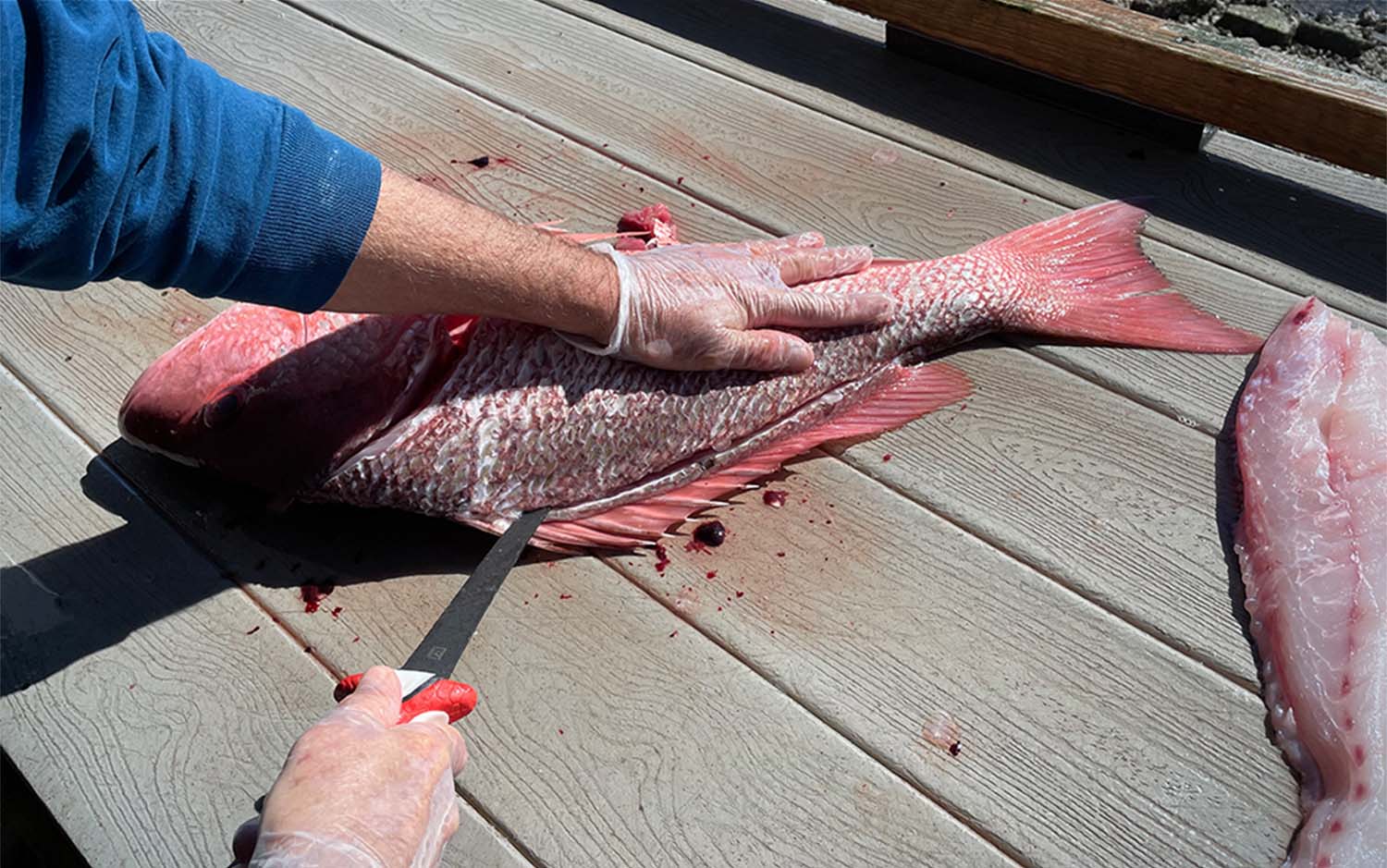
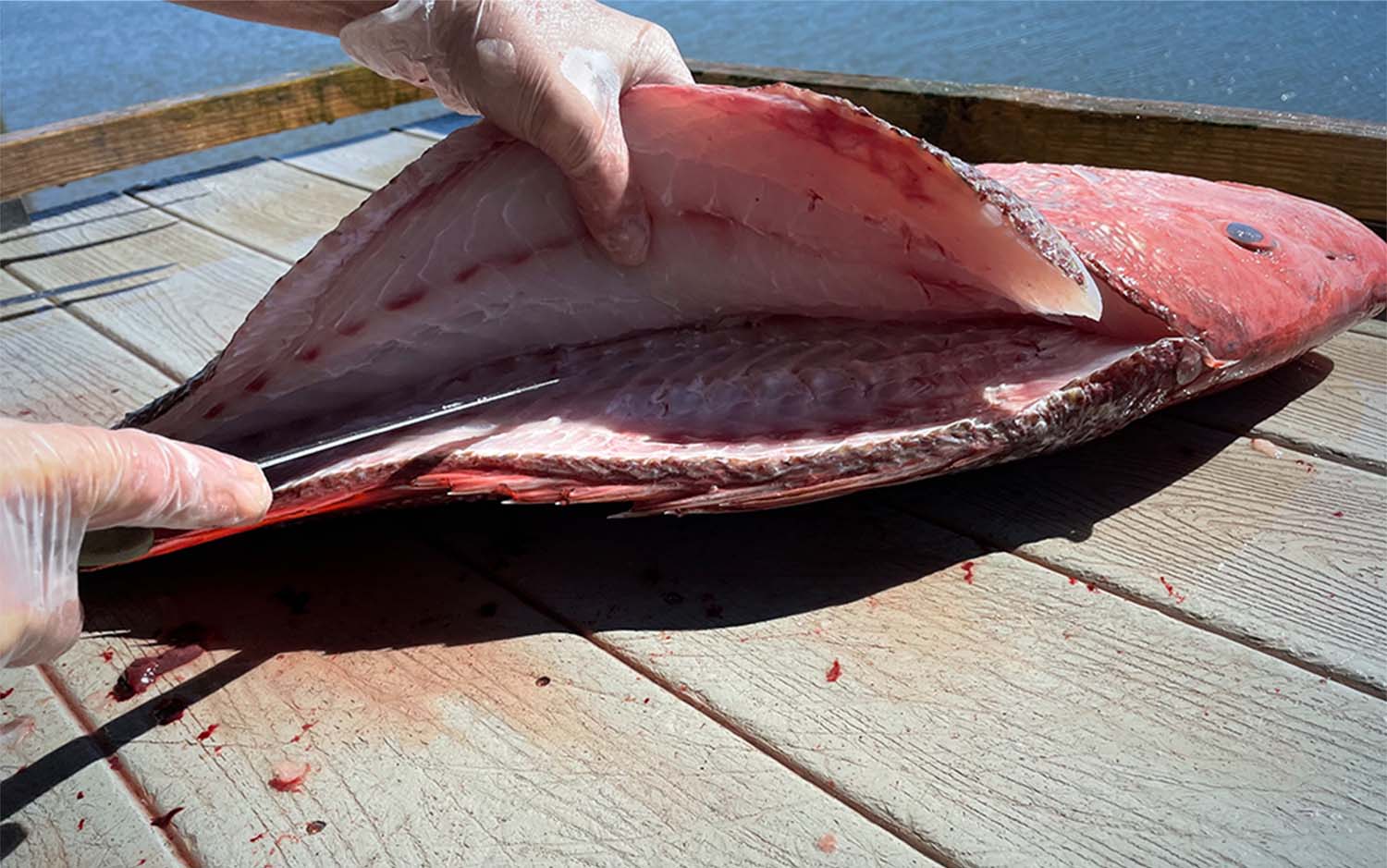
If you regularly find yourself fishing for panfish one week and the largest saltwater fish the next, the Bubba Multi Flex kit is a great option for you. It offers blade options that range from narrow and flexible to heavy duty. There’s even a nine inch serrated blade for heavy duty cutting chores. Simply squeeze the easy blade release tabs on either side of the handle to remove and replace the blades. While the easy blade release tabs are convenient, they’re harder to use when your hands are covered in slime or water. This kit also includes a handy carrying case that features a removable tray for easy cleaning and magnetic inserts to hold the blades in place.
Best Lightweight: Opinel No.15 Folder
Pros
- Lightweight, full size knife
- Factory sharp
- Beautiful craftsmanship
Cons
- Locking ring can be tough to twist after cleaning fish
Key Features
- Weighs just 2.5 ounces
- 6-inch stainless blade
- Rock-solid locking ring
The lightweight Opinel No. 15 folder features a six-inch, fairly stiff stainless steel blade and a lightweight wooden grip. The folding knife locks open or closed with the twist of the built-in locking ring.
At just 2.5 ounces, this Opinel #15 folder is perfect for trips where you need a lightweight fillet knife. The knife features a slim handle and a six-inch, stainless steel razor sharp blade that locks in the open position with a simple twist of the locking ring at the top of the grip. Besides the light weight and out-of-the-box sharpness, this knife is aesthetically pleasing to look at and has a nice curve in the wooden handle.
Best Traditional Fixed Blade: Outdoor Edge Reelflex-Pack
Pros
- Three knife sizes for various fish cleaning needs
- Hard carrying case
- Non-slip, comfortable grips
- Outdoor Edge Lifetime Guarantee
Cons
- Hard to get knives in and out of the case at times
Key Features
- Double-tempered blades for superior flex
- Rubberized TPR handles
- Includes 2-stage carbide/ceramic sharpener
The Outdoor Edge Reelflex Pack is another kit that’s perfect for those who fish for multiple species on a regular basis. All three knives have rubberized TPR handles that ensure a solid grip in any conditions, and the kit comes in a folding hard case that contains a 2-stage carbide/ceramic sharpener that makes keeping a keen edge a breeze. The case also features stamped-in rulers in both standard and metric units to make sure your catch is legal. Besides cleaning fish, these knives are alos great for general game cleaning. We took the set on a recent hog hunt and used them almost exclusively to clean and break down multiple pigs.
Best Budget: Rapala Fish ‘n Fillet
Pros
- Budget friendly
- Wax finished birch grip fills the hand well
Cons
- Wooden handle can get a little slick when covered in fish slime
Key Features
- Low cost
- Premium Scandinavian stainless steel
- Blade length: 6 inches
- Wax-finished birch handle
- Genuine leather sheath and bonus SH1 sharpener
I’d be willing to bet the coordinates to my favorite fishing hole that the Rapala Fish ‘n Fillet has cleaned more fish in the past 50 years than just about every other brand of fillet knife combined. It’s inexpensive and available virtually everywhere in the world that fishing gear is sold. Most importantly, the Finlander is a great knife. The wax-finished birch handle is easy to grip, and the hand-sharpened 6-inch stainless blade has plenty of flex for any fish cleaning task. The knife comes with a leather stealth and a SH1 pull through sharpener to keep your knife protected and sharp at all times.
All You Really Need: Dexter Russel 7-inch Fillet Knife
Pros
- Comes sharp and easy to resharpen
- Just the right amount of flex
- Great value
Cons
- Handle can get slick
Key Features
- Blade Length: 7-inches
- Made in USA
- Price: $13
- Plastic grip
My dad was a sushi chef and I’ve filleted thousands of fish hauled from fresh and saltwater. Those experiences has taught me that I don’t like a fillet knife that’s too flexible and I prefer one that’s easy to sharpen over edge retention. I’ve owned expensive fillet knives and plenty of crappy ones. The Dexter Russel is honestly just as good as any expensive knife and leagues better than other cheap options. It’s all you need in a fillet knife and nothing more.
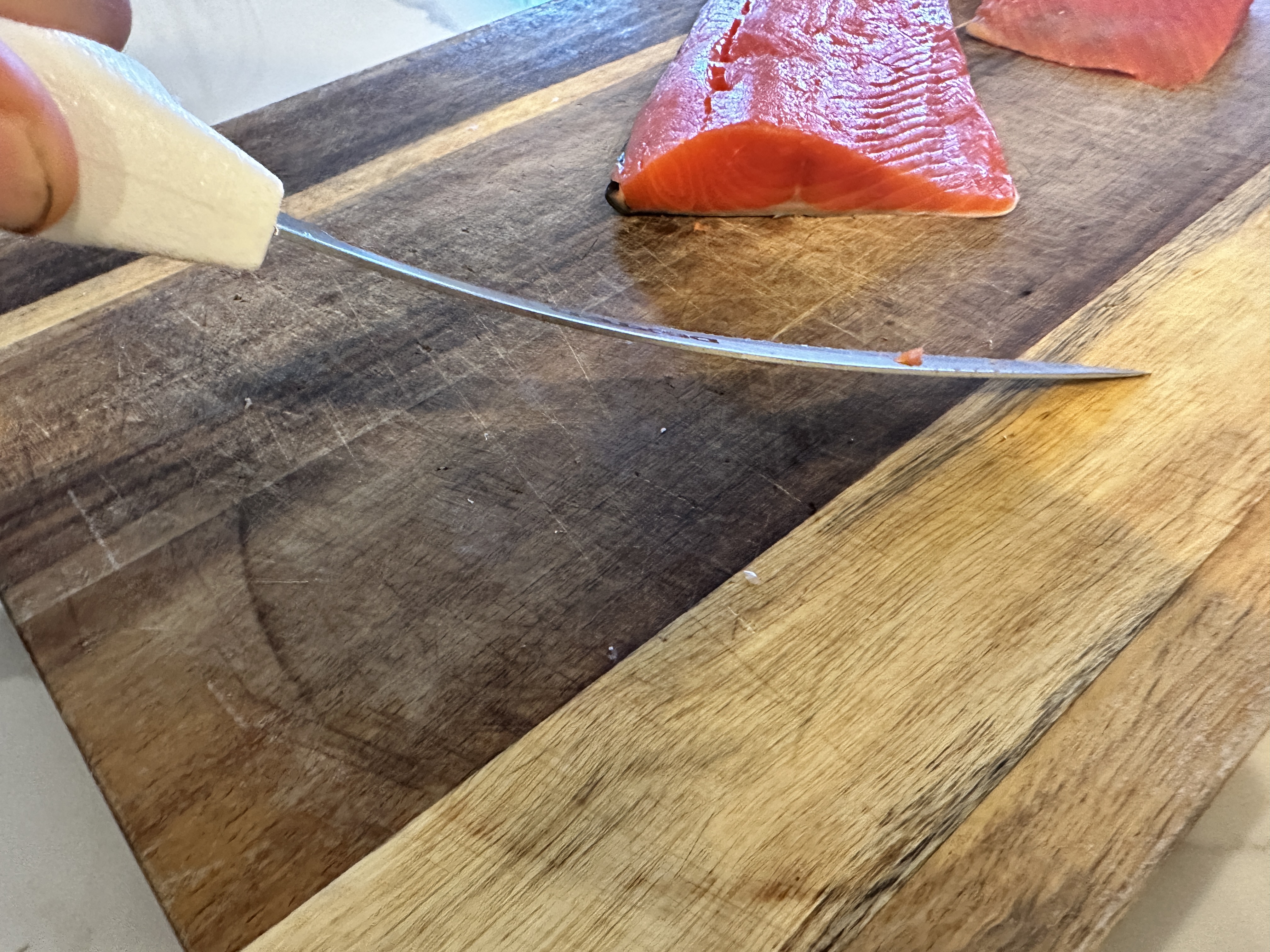
The blade flexes, but isn’t so flexible that you loose control. It’s sturdy enough that you can push through bones and thin enough to easily remove skin. It comes very sharp out of the box and the steel’s high-carbon content makes it easy to resharpen. For $13 you get a USA-made knife that’s practically perfect. To me, it’s a no brainer. — Scott Einsmann, gear editor
Read Next: Best Knife Sharpeners
Things to Consider When Buying a Fillet Knife
Electric or Traditional?
The main benefit of electric knives is that they clean fish quickly and don’t require resharpening as often as traditional fillet knives do. If you’re cleaning a large haul of fish—especially panfish like bluegill, perch, or crappie—an electric knife will save you time and energy. However, a lot of fishermen and women stick with traditional fillet knives because they tend to be lighter, take up minimal space, and are easy to resharpen.
If you’re only cleaning a few fish at a time a low cost fixed blade might be the choice for you. Traditional blades need to be touched up on a sharpening rod every few fish, but they offer experienced fish cleaners more feel and finesse. That feel is especially useful for fileting fish with delicate flesh. They are also less expensive and weigh less than electric models.
Single Blade or Kit?
If you typically clean one type of fish on a regular basis, a single bladed knife can be a good choice. But, if you switch back and forth from panfish to large catfish, you might like the option of different blade sizes and stiffness levels. Sure, you can buy several knives in different styles, but a good kit with interchangeable blades makes switching back and forth easy. And you don’t have to get used to multiple grip styles and surfaces when you change blades.
Grip Styles
The best blade in the world won’t do you any good if the grip doesn’t fit your hand well. If you can, see how a knife feels in your hand before buying it. Grip size and shape makes a difference during long cleaning sessions when your hand starts to tire. Look for one that feels good in your hand and has a shape or texture that will keep it firmly in your grip when things get covered in fish slime.
FAQs
Sure, you can use any knife to clean a fish. I’ve cleaned fish with everything from a small pen knife to a heavy butcher knife, but like any job, it’s much more efficient if you use the right tools. Unlike pocket or kitchen knives, a good fillet knife has a flexible blade that allows you to follow closely along the backbone to remove as much of the fillet as possible with very little waste.
Sharpening a knife is a two-stage process. All of the knives I tested were razor sharp out of the box, and to keep this edge, you can run a honing rod over the blade before or after each use. A pass or two over a honing steel or ceramic rod keeps the edge sharp. Like any blade, a dull fillet knife is worse than useless, it’s dangerous. Once the edge finally does wear down, you can repair it with a good sharpener. Whether you use a stone, diamond, or a belt system, the most important thing to remember when sharpening a knife is to maintain a consistent angle on both sides of the blade. Move from a coarse abrasive surface to progressively finer grits until you get your desired edge
The cost of fillet knives that I tested ranged from $16 to more than $200. Components like blade size, steel composition, and handle material factor into price. Of course, cordless electric models cost more than fixed blades due to battery cost and electrical components. Think of a good fillet knife as an investment. With proper care, a good fillet knife will last for years and spending a bit more up front for a quality blade will pay off over time.
Read Next: How to Sharpen a Knife
Final Thoughts on the Best Fillet Knives
The best fillet knives have come a long way in the past few years. With better technology and materials in both electric and traditional fillet knives, any of the blades on this list would make a great option depending on your needs. If you can, get your hands on a few of these options before you buy one, and see which one feels best to you.

